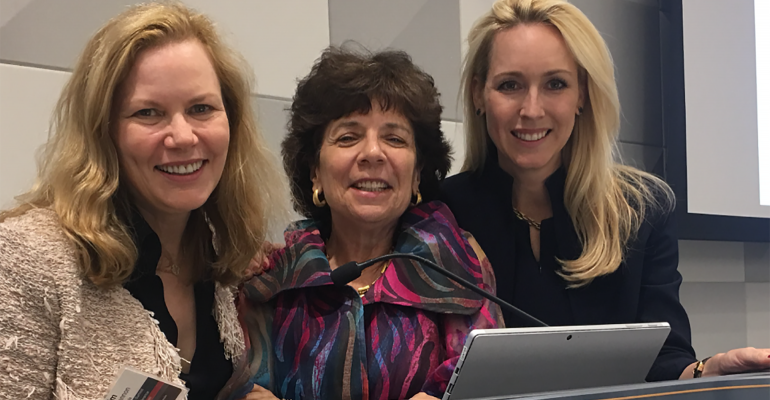The lack of female representation among financial advisors is one of the biggest problems facing the industry today. Believe it or not, things are even worse on the institutional side.
A group of high-profile women investors are holding a “guerrilla-style” conference during the annual Berkshire Hathaway shareholders meeting today to bring attention to the gender imbalance in the investment sector. Investment fund entrepreneurs Barbara Ann Bernard and Kim Shannon, and Laura Rittenhouse, financial analyst, Berkshire author and inventor of Candor Analytics, are presenting the Variant Perspectives Value Investing Conference, the first female-led conference in the 53-year history of the Berkshire Hathaway shareholders meeting. It will include senior women leaders from top investment firms and financial institutions, such as Ides Capital, Seward & Kissel, Lioness Capital, CPPIB, Morgan Stanley, Aon Hewitt Investment, KPMG, AltraVue Capital, RockCreek, Appomattox, Ernst & Young, Jana Partners and The Invested Practice.
“Historically there’s been a dearth of female portfolio managers," Bernard said. "Currently, 3% of U.S. investment firms are owned by women, but these firms only control 1% of assets under management. So they’re subscale. What happens in asset management is that if you’re subscale, you’re not as profitable. It’s not that women aren’t trying; it’s that for some reason they aren’t reaching scale and the businesses aren’t sustainable.”
It’s this Catch-22 that the founders of the conference are looking to bring attention to. Female portfolio managers need assets to reach scale so their businesses can flourish, but the assets are unlikely to come because they aren’t reaching scale.
“Asset management is about trust,” Bernard said. “Women love investing in women. They trust women and may feel more comfortable asking questions that they fear others may deem ‘dumb.’”
However, for some reason, these two groups—allocators interested in working with female-owned funds and the funds themselves—are having difficulty linking up.
According to Bernard, “To my knowledge, this is the first conference that features allocators telling managers what it is about them that makes them uninvestable. The allocators are saying ‘we can’t find the women,’ and the women running these funds are saying ‘we can’t find the allocators that purportedly want to invest with women.’ So I decided to introduce them.”
However, Bernard is quick to stress that the problem is more nuanced than simply linking allocators to funds. “In this industry, no one is an island; you have to have service providers.”
“Few firms have gone out on a limb and potentially dampened short-term returns (that scale problem again) to make a long-term play for these female funds, bar a select few," she said. "Morgan Stanley, for instance, is very good at becoming a prime broker for small female funds.”
The goal of the conference is to double the assets under female management by 2020 by creating and supporting initiatives that will connect exceptional female investment managers with the highest quality investors, so that a diversity dividend is generated to change the overall status quo in the industry.
“A lot of people are thinking about this issue in isolation, but it’s only when you look at a problem from everyone’s variant perspective that you come up with real world solutions,” Bernard said.





